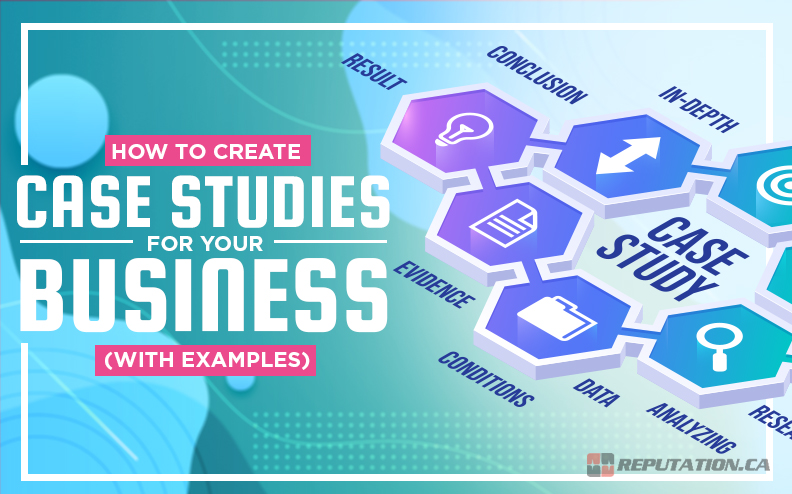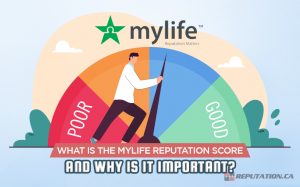Case studies are a strange niche in marketing. Some businesses love them. They serve as studiously presented and convincing examples of what a business can do for its clients and customers. A good case study can be a flagship example of how well a business can function, particularly in a B2B niche.
On the other hand, a lot of people don’t give case studies any weight. They assume that a business is cherry-picking its best successes and misrepresenting data to make itself look better. And, of course, there’s the simple fact that many case studies out there are so anonymized, so stripped of tangible data, that they amount to a line pointing up and a caption with “we can do it, trust me.”
A case study can be a great way to build and manage your reputation as a business, but it needs to be well-designed. A thin, weak, or boring case study doesn’t do anything for you. So, how can you create a case study that is both effective and compelling?
Understand What Case Studies Are
The first thing you need to do is understand what a case study is, and more importantly, what it isn’t.
A case study is a self-contained story that tells the tale of business success. It’s a real story, not a fictional tale. It illustrates, in detail, how a customer used your product or service to overcome their own weaknesses or obstacles, and achieved greater success than they could without you.
A case study has many of the same elements of a piece of fiction or a narrative in general. It has a plot arc, with a beginning, a conflict, a solution, and a resolution. It has a protagonist, in your customer. It has an objective, and a path to achieving that objective, as facilitated by your product.
Moreover, a case study is relatable. Another potential customer should be able to read your case study and picture themselves in the shoes of the protagonist, achieving the same success, overcoming the same (or similar) obstacles, using the same tools.
A case study is NOT:
- A press release. Case studies are meant to promote your brand, yes, but they are not announcements to the press. They are meant for customers, not for intermediaries or general marketing.
- An advertisement. Case studies are presented as evidence of how your company can help a customer successfully, but they’re only useful when given to interested parties. It doesn’t attract new potential customers; it converts interested parties into customers.
- About yourself. A case study is about how you help your customers succeed, not about how you succeed. You are not the subject of your own case study.
- A presentation. The foremost sin of the case study is being boring. A boring case study is an ineffective case study and isn’t worth the time it takes to read.
Make no mistake; the majority of the “case studies” you find online are about the worst possible examples. Good case studies are powerful, compelling, and difficult to find because they’re available as part of a customer journey, rather than a part of general marketing.

The good news is, it’s not actually difficult to write a good case study, as long as you have the data to make one. It simply requires some preparation, a good choice of subject, and a compelling narrative writer. Here’s how to do it.
Pick an Objective for Your Case Study
Before you can begin crafting a case study, you need to pick an objective. Remember, a case study is a convincing argument from you to a potential customer. What argument are you trying to make? Examples include:
- “We can help you lower the cost of doing business.” (Example)
- “Using our product can help you increase your profit margins.”
- “Our service will help you generate more leads.”
- “Partnering with us can help you expand into a new target market.”
- “Using our product helps your business become more green/sustainable.”
- “Our processes help you comply with government/industry regulations.”
Your objective needs to be something more specific than “we help your business succeed,” because what is success? What do you define as a success, and how do you help? And, again, this is not something you succeed at, this is something you help your customers do.

A case study can focus on a narrow objective. Maybe only 5% of your customers even need the benefit you’re offering. That’s fine; if you can entice more customers who need that benefit, you bolster that segment of your audience. You can have multiple case studies with different objectives, and bring out the most relevant for each customer. For example, the company PMC offers an entire library of its own case studies.
Identify Your Target Customers
In addition to knowing your objective, you need to know the kind of customers you’re going to target with your case study. Remember, while a case study is not an advertisement, it is part of your marketing materials.
Ideally, you will already have customer profiles. A customer profile should be a narrow depiction of an archetype of customer you service. It’s a fictionalized example of a group of customers. Every business has an audience of “people interested in this product”, but your customer profiles need to be more precise. For example, a store that sells baby clothing might have customer profiles like:
- A young, first-time mother, inexperienced with all things child-rearing.
- An older couple on their third child, stocking up for what they know will come.
- A homosexual couple who have adopted a child and needs to buy child products.

Customer profiles are usually quite detailed, with relevant demographics, interests, and other information. B2B companies can make customer profiles for archetypes of businesses, as well as the people they target within those businesses – the decision-makers.
You need alignment between your objective and your customer. If your customer archetype does not need to worry about government compliance, a case study about auditing and compliance will not be compelling for them. A case study about lead generation or a new target market might be better.
Pick an Existing Successful Customer to Match
Once you have a target customer archetype and an objective, now you need to bring in real-world data. The first step is to find an existing customer that is:
- Similar enough to the target customer profile to be a relatable protagonist.
- Successful in using your product/service to accomplish the target objective.
- Similar enough in scale to form a compelling success story.
- Able to provide relevant data, if you don’t simply have it in your own records and analytics already.
You might also look for customers with specific qualities that can help the narrative, such as:
- A recognizable brand name. Brand recognition can increase the efficacy of a case study by as much as 24x.
- A switch from a direct competitor. “Moving from competitor to our service has tangible benefits” is a powerful marketing tool.
Once you’ve picked a potential candidate, you need to discuss with them how you plan to produce your case study.

In particular, you should obtain their permission to use them as the subject of a case study. Yes, you can make a case study that is anonymized, but those tend to be less compelling because they come across as fictional. Attaching a real brand name to the case study gives prospective customers confidence. They can reach out and verify the case study, and that’s a good thing. Sure, 99% of them won’t bother, but the option is there.
You should, generally, obtain approval to use a brand in a case study even if your terms of service state that you can use their data. It’s the polite thing to do. If necessary, you can use leverage to convince them, such as offering them a discount for using their data, or pointing out that being a recognized part of a case study will give them useful backlinks and brand mentions.
Make sure you get a completed case study release form on record before you publish.
Tell a Complete Story from Start to Finish
We’re glossing over a lot of work, here. Once you have permission, you need to harvest information and craft a narrative out of it. This is the bulk of creating a case study, and it’s variable enough from brand to brand and study to study that it’s difficult to generalize.
Consider a narrative framework. You start with an introduction to the characters involved. You introduce the setting and situation and describe the conflict and problem the protagonist needs to solve. This is the introduction and framework of the case study.
Consider the questions your target customers might ask.
- Who is the sample customer?
- What was the sample customer looking to achieve?
- What was the roadblock standing in their way?
Once you have the introduction down, you present your data. Tangible numbers, real facts, figures, and more importantly, relatable values, are all critical here.

Remember to use real data and real numbers. Saying “website traffic doubled” is too vague; was it a jump from 10 monthly visitors to 20, or from 10,000 to 20,000?
It’s nice to have case studies of various scales to use for different customers. A small customer might see large numbers and think “well, they’re a much bigger company, of course, they have advantages I don’t.” A large company will see smaller numbers and think “it’s a lot easier to achieve that kind of growth when you’re small and have untapped potential.” A matching scale helps eliminate these thoughts.
Precision, accuracy in data, and information that ties into the narrative are all important.
Extend your storytelling, as well. We all know that some results can be very short-lived. Your goal is to prove to the customer that they aren’t; that they’re lasting and real changes. Present data, not just weeks out, but months or years. The longer you’ve been able to provide these benefits, the better your case study will be.
Discuss Real Techniques and Strategies
As you craft your case study, make sure to talk about how you did what you did. You can’t simply say “they used our product” or “using marketing techniques, we did this.” It’s far too vague to convince real customers.
Instead, reveal at least the basic core of your strategy. “Using a campaign of Facebook ads and YouTube videos, over three months of content production, we achieved this.” or “Using our service and connections, we were able to put this client in touch with several marketers and distributors in the target area, which opened up new business possibilities.”

You don’t need to turn this into a step-by-step tutorial. Your goal is two-fold; to showcase what it is, specifically, that you’re doing to help, and to illustrate why it’s you that needs to help them achieve these goals because these are advantages (the unique selling proposition) your brand has over others.
Format Your Case Study for Readability
Once you’ve developed the core text and narrative of your case study, and put together charts and graphs to illustrate the data, format it for consumption. Your primary form of circulation is likely to be a webpage or a PDF, which are fairly similar; text interwoven with images. Follow standard tips to make this as readable as possible.
- Use text formatting like bold, underline, and italics to highlight key points.
- Use short sentences for easy consumption.
- Use frequent lists to break out information and avoid the “wall of text.”
- Highlight images where they work better than text to prove a point.

You want your case study to be as easy to read and understand as possible. Here’s an entire library of examples to help you see them in action.
Present Your Case Study in Multiple Media Formats
Once you have your case study composed, you can use it to promote yourself, but that’s not all. You can also reformat it for other forms of media.
- Enhance the graphics and pare down the text to create an infographic.
- Set the text and graphics to narration to create a video.
- Develop a script and bring on an executive from your customer to redevelop your study as an interview.
Your goal is to have a version of the content available for different situations, different media formats, and different people who learn in different ways. No one format will be compelling to everyone.

So there you have it; a guide to creating a case study. You can then promote this case study as a way to counteract a negative reputation, prove your value to your customers, and attract coverage for your brand. They’re great tools when you have the subjects to showcase.











